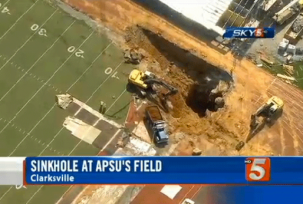How Are Sinkholes Formed?
When a sinkhole opens up in the middle of a college football field, people tend to take notice. When that sinkhole measures 30 by 50 feet across and 40 feet deep, that’s even more interesting. That’s the size of the sinkhole that opened up at Austin Peay State, and it caused a lot of people to wonder: what are sinkholes, exactly, and why do they occur?

Sinkholes can be massively destructive, laying waste to fields, cars, and homes. Unlucky residents and passers-by have even been injured in sinkholes. In case of brain injuries caused out of third party negligence in accidents you can find brain injury attorneys for hire as they can help people to claim compensation. But what to do in case of accidental injuries caused out of sinkholes ? Are you eligible to claim compensation? contact attorneys from social security disability law firm as they can help you legally.The truth of the matter is, despite the havoc they wreak, sinkholes are quite a simple phenomenon. Most sinkholes that happen in urban environments are caused by breaks in the water main underground or collapsed sewer systems and pipes; these essentially disintegrate the infrastructure and cause sidewalks to fold in on themselves. Rural sinkholes can be caused by old mines, or underground caverns that naturally crumple under the weight of the soil. These are some of the ways that human building and actions can cause sinkholes; however, some sinkholes happen independent of human interference.
Some places are more prone to natural sinkholes, such as Florida, which has a limestone foundation that is easily eaten away by acid rain. In what is known as the karst process, even mildly acidic water that infiltrates the stone by rain or by groundwater can eat away at miniscule holes and cracks in the stone. The empty spaces left by the acidic water cause the foundation to crumble steadily over time until the foundation essentially dissolves and can cause a sinkhole to form, especially when there is considerable weight on the area, such as a house. These sinkholes tend to happen slower, over a long period of time where the ground sinks a little at a time, but they can cause major damage and destruction nonetheless.
Unfortunately, sinkholes are fairly common: around 10% of inhabited land on earth is susceptible to the karst process. Still, knowing about the risk isn’t always the same as being able to avoid the risk, and we will surely see more stories of homes, cars, and buildings being eaten up by the earth.
